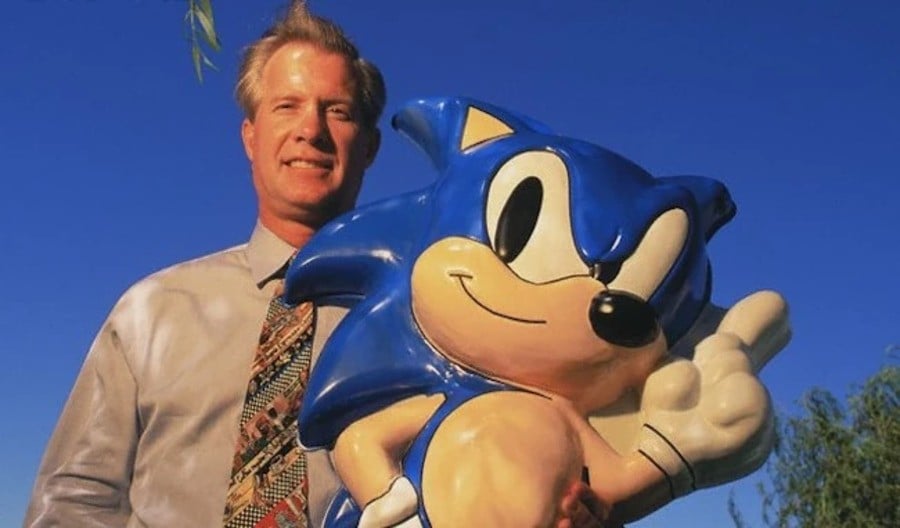
As part of our end-of-year celebrations, we're digging into the archives to pick out some of the best Time Extension content from the past year. You can check out our other republished content here. Enjoy!
Tom Kalinske served as the CEO and President of Sega of America from 1990-1996. During that time, Sega went from owning just a small percentage of the US video game market to beating the current market leader Nintendo. It did this through a combination of canny marketing techniques, assembling a strong software library, and directly appealing to an older audience than its competitors.
But, just as soon as Sega of America started to emerge as the dominant force in the US video game market, tensions started to emerge between it and Sega of Japan. Kalinske claims he was increasingly forced into defending bad decisions that the company's parent company was making, such as the premature release of the Sega Saturn, and had to turn down promising hardware partnerships with companies like Sony. That's despite originally joining the company on the promise of being able to run things autonomously from the States.
Recently we caught up with Kalinske and asked him more about his career at Sega, his real thoughts on his rival Howard Lincoln, and what led to his decision to leave the company in 1996. What follows is that conversation, edited for both clarity and length.
Time Extension: Let's start at the very beginning, what was your background before joining Sega as CEO/president? Were you aware of video games or Sega before getting the job?
Tom Kalinske: I spent 17 years at Mattel and I ended up as CEO of Mattel, but before that Mattel was a conglomerate. We owned the Ringley Bros. and Barnum & Bailey Circus, Western Publishing, Turco Tubular Steel Manufacturing Company, Audio Magnetics, Optigon Organ, Monogram Models, and of course, during that time, Intellivision.
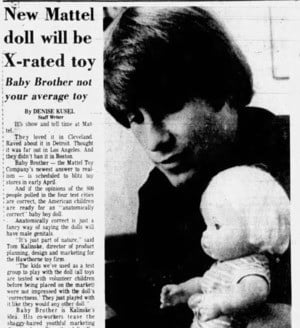
Now, I was only in the toy business at that time. I didn’t have anything to do with any of those other companies, but I saw what happened with Intellivision when it tried to take on Atari and Atari went downhill laughably; it vanished, and so did Intellivision. So I was definitely aware of video games and I was also aware of video game technology and had certainly seen both Atari and Intellivision games. While I was with Mattel Toys, I was also aware of Sega too, because it was owned by Paramount Pictures.
Sega reported to Barry Diller who was at Paramount, and Mike Eisner, kind of interestingly, who later ran Disney. Mattel would work with Paramount on various Paramount projects, licenses, and what have you, and sometimes they would bring up Sega to us and show us what the Sega arcade business was. Because that’s all they had at the time: Sega arcades. Through that, I came to know the guy who became chairman of Sega: Hayao Nakayama.
When I went to Matchbox — which is a whole other story about how [Mattel] tried to buy Matchbox and couldn't, but a friend of mine named David Yeh who ran Universal manufacturing did — I joined with [Yeh] and we fixed [some of that company's problems]. Matchbox was in receivership so we fixed those and took Matchbox public on the New York stock exchange and it was a very difficult period.
I worked on it for three years, travelled 250 days a year, and I was never home, because Matchbox’s main business was in Europe and Australia, not so much in the US. Anyway, after we took it public, we ended up selling it to Tyco, which interestingly years later was purchased by Mattel. So Matchbox owned by [Tyco] became a Mattel property.
Time Extension: It would be interesting to hear - how did you initially get the job at Sega? And what first attracted you to the role?
Tom Kalinske: While I was running Matchbox — and after we had fixed its problems in Europe and increased its revenue and distribution and what have you — Hayao Nakayama at Sega asked me to take on the 8-bit Master System business and handle the distribution of the Master System in Europe. I took a look at it and I compared it to the NES and I told him, ‘This is not any better, there’s not any advantage to it, so I’m going to turn you down.'
But Nakayama knew me and apparently liked me, so after we had sold Matchbox and I was lying on a beach in Hawaii with my family, he tracked me down to my executive assistant and literally came to Hawaii and said, ‘You’ve got to come with me to Japan and look at 16-bit technology because I think you’re really going to like it.’ And you know, initially, I didn’t want to do it, and then he said, ‘We also have a colour handheld unit to compete with Game Boy and I think you’re really going to like that too, and you’re going to help me take on Nintendo in the Western world.’
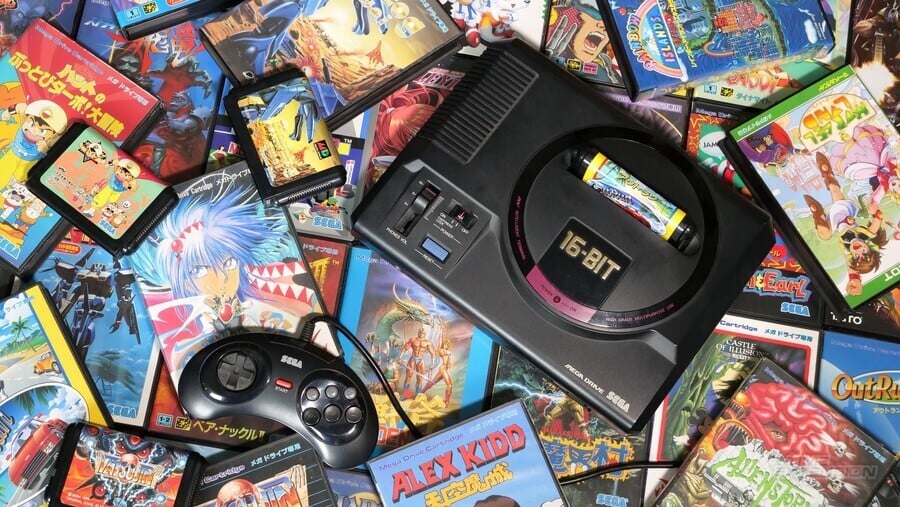
I went back to Japan and he was right! I really, really fell in love with 16-bit technology. I saw it as a tremendous advantage over 8-bit, and I really liked what became the Game Gear handheld unit. So that’s how I landed at Sega. So my history is that it actually goes back a long way. I did know about video games and I certainly knew about Hayao Nakayama.
Time Extension: There was a 1993 Wired article that I think was trying to put in context the sudden growth of Sega under your leadership and one of the things that it alluded to was the fact that in Japan at the time it was very uncommon to compare yourself to a competitor and that Nakayama was reluctant in the start to compare themselves directly to Nintendo. It says you helped talk him around to the idea. What was that conversation like? How did you convince Nakayama to take that route?
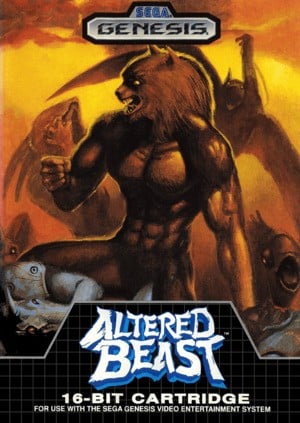
Tom Kalinske: Before I accepted the job, I had a very frank conversation with Nakayama. I said, ‘Look, Japanese companies have a reputation for making all of the decisions for the western world, i.e. the US and Europe, back here in Tokyo, and I can’t work if that’s the way it is.’ He said, ‘No, no, no, you will be able to make the decisions for the western world.' So I had that agreement with him weeks before I joined the company. And to that point, when I joined Sega, I knew a little bit about it, but I spent a month really analyzing the situation versus Nintendo and came up with what I called my five-point plan.
I went back to Japan and met with Nakayama-san and the board of directors. And I said, ‘Okay, here’s what we’ve got to do. We’re going to take on Nintendo, but we’ve got to lower the price of our hardware from $200 to $149. We’ve got to start doing more sports titles in Europe and the United States; we’ve got to do NFL Football and MLB Baseball and NBA Basketball and in Europe FIFA soccer. We’ve got to do more American licenses, and we’ve got to do more product development/game development in the US on those types of products. We’ve got to position ourselves as the system that is for the older age group in that we do what Nintendoesn’t do. And we’ve got to position Nintendo as the little kids’ system. They’re a little toy for little kids aged 9-12. We’re the adult system for teens and college age and up. And we’ve got to really position the strategy games as being appropriate for the older age, and the sports titles and what have you. And then we’ve got to take what’s going to be our best title and pack it in with the hardware and get rid of this thing called Altered Beast because in Kansas they think that’s devil worship. And we’re going to aggressively advertise against Nintendo and make fun of them.'
Everybody in the room hated everything I said. Absolutely hated it. Including Nakayama. He eventually got up and said to me, ‘Well, nobody agrees with anything you said.’ He kicked over a chair and he started to walk out of the room, and I thought, ‘Well, that’s the shortest career anybody ever had.’ But at the door, he turned and said, ‘But when I hired you, I made the commitment that you could make the decisions for the Western world’ so go ahead and do all of these things that you have outlined and I hope they are successful, and that was it.
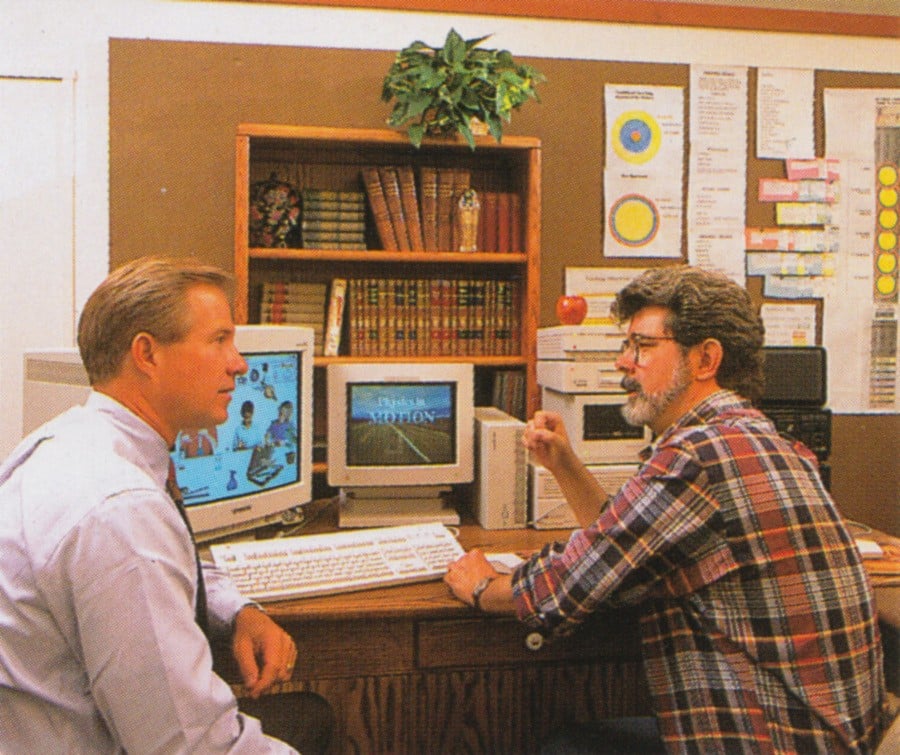
Time Extension: When we spoke last, you mentioned that you were advertising outside of rock concerts, and having people on college campuses be like Sega representatives, and stuff like that. How did that aspect of Sega’s marketing plan come about? It sounds kind of like guerilla marketing to do it on that on-the-street level.
Tom Kalinske: Well, that was all part of the marketing plan and it wasn’t all me by the way. I had very good people, and one of those guys was my head of marketing Al Nilsen who had been at Mattel and another was Paul Rioux who had been in operations at Mattel early on.
Interestingly, we were also the first major company to advertise on MTV, which is really kind of shocking, isn’t it? You’d think that MTV, given how successful it became, would have had lots of people flocking to advertise on it, but no major companies would until we did. We sponsored rock concerts and we usually had a display outside of the entrance to rock concerts of the Genesis machine hooked up to a large screen TV to let people see what the heck it was about. And we did the shopping mall tour where we set up the NES and put it against the Genesis and asked teens, or whoever came by, to play both and tell us which one they preferred. We would win that 85% of the time. And you're right, we also had male students on campuses across the United States, whose job it was to wander around to men’s dormitories and fraternity houses and plug in the Genesis to the living room or the rec room of the location and play videogames.
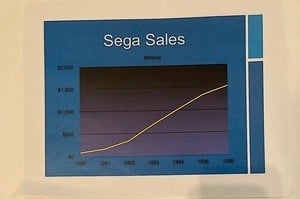
All this stuff was grassroots marketing, but its aim was to attract the male user, who was a hard audience to reach. They didn’t watch a lot of television other than the sports events, which weren’t on all the time and frankly were very expensive to advertise on. So all that was augmenting our television advertising and to get that male user to love Sega Genesis more than he loved Nintendo. And it worked!
We ended up passing Nintendo as you know in our share of the market in 1993 and I always found it amusing when Nakayama or others in Japan would say later on, ‘Why don’t you guys just use some of the commercials we’re shooting over here in Japan and dub them into English? Or ‘Why don’t you do this kind of marketing we’re doing over here in Japan?’ I’d say to them, ‘Nakayama-san, you never got above a 10% share of the market, we’re on 55% share of the market, why should we do what you’re doing? Because frankly, you’ve failed in Japan.’ They didn’t like that, but I was very forthright with them.
Time Extension: You mentioned earlier about the commitment from Nakayama that Sega of America would be able to make its own decisions, but later on it seemed like Sega of America was forced into a lot of situations based on decisions made by Sega of Japan, especially in regards to hardware. What were the conversations like in terms of pushing back on that?
Tom Kalinske: Obviously, the situation did change dramatically. It went from where I was able to do whatever basically I wanted to, to all of a sudden, I was being dictated to. And I really, at the time, didn’t understand why this was occurring. We’d been so successful, so I didn't understand why all of a sudden decisions were being forced on me from Japan, even to the degree of all that stuff I’ve talked about before on the Saturn where I was forced to introduce it, we didn’t have enough hardware, we didn’t have enough software, and then, to make matters worse, we were forced to introduce it five months earlier than we wanted — well, we didn’t want to introduce it anyway.

[At the time], I also couldn’t get Japan to look at this chipset out of Silicon Graphics – well, they did eventually look at it. Jim Clark, who was chairman of Silicon Graphics at the time. He was the guy who later founded Netscape. He called me up, we knew each other, and he lived near me actually. He wanted us to look at a chipset that they had that they thought was perfect for a video game system. And of course, Silicon Graphics was a company that was very well known for having these very advanced computers for special effects and movie-making, and what have you. And so I went over there and his chief engineer was Jensen Huang, who later founded [NVIDIA]. Anyway, I looked at it and I thought it was really good, but we of course were not responsible for hardware, we were supposed to do whatever Japan told us to do and just worry about software.
So I called up Nakayama-san and told him about what Silicon Graphics had, and he sent a team over to look at it. And they basically turned it down, saying that the chip was too hard to manufacture, it would have been too big of a chipset, and it would have had too much throw-off waste in the manufacturing process; it would have been too expensive. So that was the reason for not doing it. That same chip was later sold to Nintendo. The reason why all of a sudden, they started making the decisions for me, I later found out.
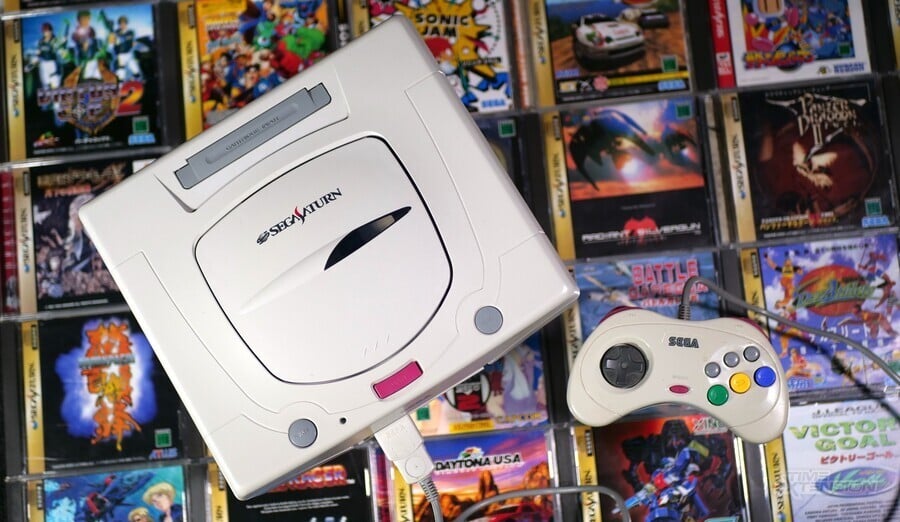
The reason was every Monday Nakayama-san would go into the so-called ‘Decision Room’ where he met with the key staff and he would beat the hell out of all of the managers and directors over and say things like, ‘Why can’t you guys get the revenue up like Tom has in the United States?’, ‘Why can’t we more successfully compete with Nintendo like Tom in the United States?’
Well, if you’re one of those managers sitting over in Tokyo and every Monday you’re getting the hell beaten out of you and yelled at by Nakayama – and he was very physical, I saw him in meetings literally slap subordinates – after a while, you start to hate this guy Tom over in the United States. And so, I stopped getting cooperation from other senior managers inside Sega Japan. I think that was why they started making the decisions for us and forcing Nakayama to overrule me in the United States. It’s kind of a strange thing, and I never found out about this until literally after I left Sega, when I was told it by several different Sega managers who have since left the company.
Time Extension: You mentioned recently about Sony and Sega potentially partnering up on a console, and that Sony had greenlit it but Sega of Japan was very reluctant. I found recently an article in The Greenville News (dated 21 May 1992) about a Sony/Sega partnership but for software for the Genesis, Game Gear, and Sega CD. I’m wondering, is that software relationship what eventually blossomed into those conversations about hardware?
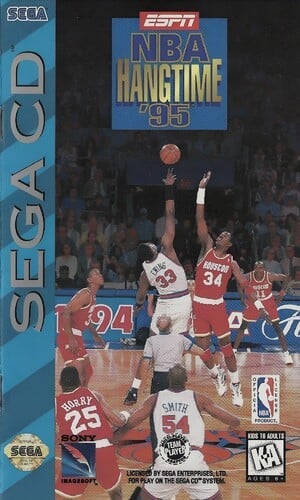
Tom Kalinske: Well, the software relationship started between myself and Olaf Olafsson who was head of Sony Entertainment, and the agreement was to help them do software and literally teach them how to do software. So we literally did.
My head of R&D Joe Miller literally taught Sony engineers how to think about developing video game software and they ended up with a studio down in Santa Monica, and we sent people down there to work with them and the idea was to develop software for the Mega Drive/Genesis CD-ROM.
Nobody really knew how to do great CD-ROM development at the time, because it was a whole different format/different platform and there were little tricks to it. But anyway, that was the relationship we had and Sony agreed to do three titles and we were doing three titles that were going to be the first titles on the Sega CD. And we also worked with an outside company called Digital Pictures and we both worked with that outside provider as well, and that was the start of the Sony/Sega relationship.
It was quite a good relationship and it worked pretty well, so when we started talking about what the next system should be like Olaf and I thought, let’s do one hardware system together. We’ll bear the risk and the cost of doing the new hardware system. It will be an optical system with a CD drive in it, but whoever does the best software will benefit from that revenue and that profit on the software – each company individually. So that was the deal and we talked about it, and Sony agreed to it in principle and Sega never agreed to it.
Time Extension: Do you remember what Sega of Japan’s objections were?
Tom Kalinske: Sega of Japan never agreed to it. I think Nakayama’s comments were, ‘Why should we help Sony in that way? We’ll do our own system and they can do whatever they want.’ And so, that was that.
Time Extension: You mentioned Digital Pictures, which I believe is the company that did games like Night Trap and Sewer Shark. It’s kind of a good segue to talk about the rating system that Sega put together. Many people today may have heard of the ESRB and rating systems like that, but Sega even before Nintendo created its own rating system. I’m wondering why that was important at the time for Sega. Was that a response to the scrutiny and pressure being placed on video game companies or was that something you felt was inevitable?
Tom Kalinske: People have it all wrong. We did the rating system way before there was a senate subcommittee hearing and it was part of our strategy to go after an older audience.
I remember saying to people we’ve got to be like Disney. They do G-rated movies, they do PG-13 rated movies, and they do R-rated movies under another division of Disney. So that was the strategy. We’re going after this older age group, we can’t just be doing G-rated software, so we’ve got to do products that appeal to an older age group. And so we started the rating system way before there was a senate subcommittee hearing, and I hired a guy named Arthur Pober, who had actually worked with me while I was at Mattel.
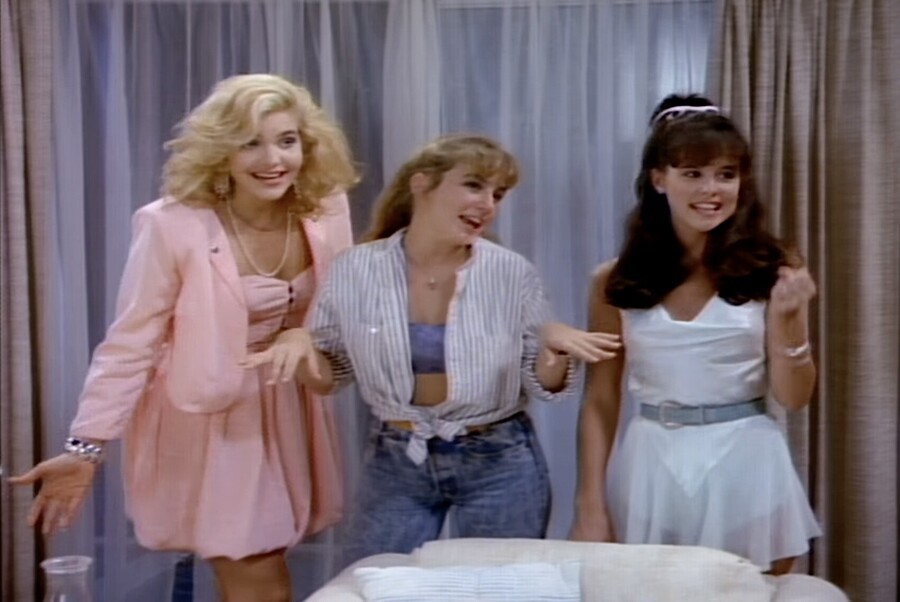
He was a professor out of New York University, who worked on the CARU guidelines, which were the Children Advertising Reviewing Unit established to review children’s advertising. And so, he put together a panel of sociologists and psychologists and educators and they literally reviewed every title we at Sega did, and we had our third parties send titles in for review as well, and then we assigned a rating to it: whether it was a GA rating (General Audience rating), a T rating (for Teen), or an M rating (for a Mature audience rating).
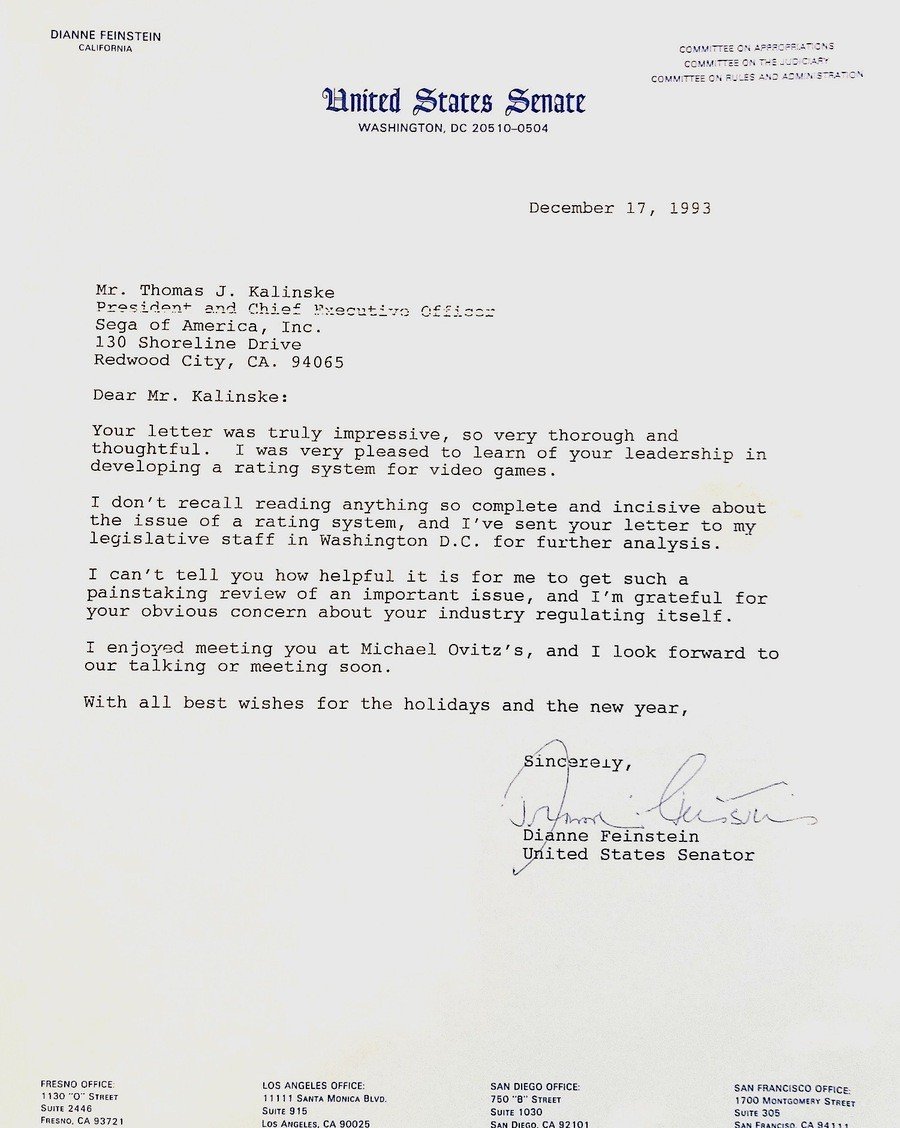
Anyway, we did that, and at the same time, we established the Interactive Digital Software Association (IDSA) for the video game industry to help lobby for the video game industry in Washington. Then the Senate subcommittee hearings happened. So we pointed out in those subcommittee hearings and wandering around Washington that we already had a rating system; Nintendo refused to use it. Nintendo said, 'We don’t need it, maybe others in the industry need it, but we don’t need it because everything we do is great.' And so, they initially refused to do it.
Later when the association became more powerful and of course, the Senate subcommittees did happen, later on, Nintendo finally agreed to use the IDSA rating system, which by the way was the Sega rating system; Arthur Poder just went over from working with us to working with the IDSA. It was the same rating system, but they changed a little of the nomenclature to keep Nintendo happy. But it was essentially the same rating system, the same people, the same professors, the same educators rating the products. Anyway, that’s how that all occurred and then it became the ESRB (the Entertainment Software Rating Board).
Time Extension: We recently put together an article on Sega Channel on Time Extension and we were told it all came about as you had tasked Doug Glen to search for new technologies. Is that how you remember the idea of the Sega Channel starting?
Tom Kalinske: Yeah, it was kind of interesting. I loved the idea of being able to do it through cable boxes in homes. Much like, before that, I supported the video game rental business too. I supported Blockbuster and their renting of video games, whereas much of the industry, and certainly Nintendo, said, ‘We don’t want people to be able to rent our video games, because then they won’t buy them.’ I always had the opposite point of view. My point of view was, ‘Hey if you play it once or twice on a weekend and it’s really a good game, you’re going to want to buy it.’
I had the same viewpoint about being able to play it on a cable box. I was like, ‘If it’s really a good enough game, you’re going to want to buy them.’ So that was my viewpoint and I really liked the idea of being able to provide cable owners and cable TV viewers with video games on demand, and it was really a monumental engineering test.
I remember going down into the R&D area once and my good friend Joe Miller, who ran R&D, had a huge conference room and there were all these cable boxes around the room: all of them. I didn’t realize that every city almost had a different system of cable boxes. So he had to figure out how to engineer so that our games would work on every single one of these cable system boxes around the United States and it was a herculean task. Anyway, he did that and it worked and of course, we also teamed up with people like [Scientific Atlanta] as well and the whole thing was a tremendous endeavour and I was very proud of it. And [the Sega Channel president Stan Thomas] was just a great guy. And what a loss.
Time Extension: Yeah, pretty much everyone I spoke to from Sega and Time Warner has such amazing things to say about Stan Thomas, and I was pretty shocked when I looked online and found there’s not really much out there in terms of his contributions to Sega Channel and anything beyond his time at HBO. If you go digging there is quite a bit about HBO, and his time there, but not a lot about him as Sega Channel president, which is quite bizarre.
Tom Kalinske: I guess it was just a small part of history, but yeah, you’re right, he was a terrific individual. I’ll tell you one other funny Sega Channel story before we had done it and we were still getting it R&D’d and finishing our deal with Time Warner, I got this call from somebody at TCI and they said, ‘We’re coming to see you and we’ll be there in an hour.' They were literally already at the airport in San Francisco. And so this group of guys show up: a lawyer, a business guy, and some other people. They showed up at our Sega office and said, ‘We understand that you’re going to be doing a video game cable deal with Time Warner, well, you got to include us too!’ I don’t know how they learned about this. I said, ‘Why do we have to include you too?’ And it was like talking to the mafia. These guys almost threatened me, you know.
As we found out, TCI had also a large number of cable stations and a lot of cable connections around the United States, so we did end up eventually doing the deal with them, but it was almost because they scared the hell out of us.
Time Extension: As an aside, it would be interesting to hear — what were your real thoughts on Howard Lincoln? Nintendo and Sega were obviously bitter rivals, but I’m wondering did you ever meet each other in a friendly setting or did you two have a mutual respect for each other? What was the relationship like there?
Tom Kalinske: Well, I actually knew him before I was at Sega. When I was at Matchbox, he wanted us to do a Matchbox video game on the NES. And we started to do it, but I don’t know if we ever finished it or not. Anyway, I knew him from those days and I certainly knew him from the industry events. We were ferocious rivals and competitors, but I was more combatively competitive with his head of marketing Peter Main than I was with Howard himself. I mean, Howard was a lawyer and a very smart guy, and a very senior executive.
Now it did get a little contentious when I wanted to form a new [software association]. Remember initially the video game industry was under SPAR (the Software Publishers Association), and all they cared about was Microsoft and Oracle and you know, business software. They didn’t really care about video games and so they didn’t really treat us very well.
So when I wanted to form a new association, initially Howard was not for it, but later he came on board. In fact, Howard, myself, and Larry Probst at EA — and a few others — were the guys who initially put up the money to form the IDSA, which later became the ESA (Entertainment Software Association). We were the ones who put up the money, so we did get him to agree to do that, so I had a better relationship with him. And of course, I think everybody knows that when I left the industry, he sent me a very nice letter, which I have somewhere in my office where he said something to the effect of, ‘While we were bitter rivals and competitors, I’m sorry to see you leaving the industry because you contributed so much to our industry and changed it for the better.' So I thought that was very nice of him.
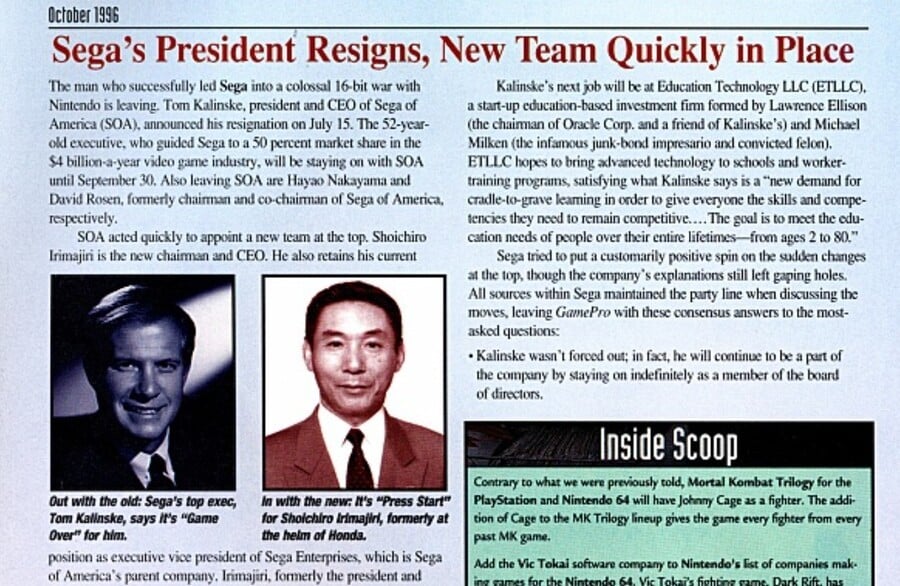
Time Extension: Just to kind of cap things off, I found a news article in GamePro about your resignation from Sega. It says you announced in July that you were resigning, but you stayed on a little later until September, which is when you left. What were your reasons for leaving Sega? And how did you decide what was your next step?
Tom Kalinske: It was the loss of control, being forced into making decisions I didn’t agree with, the whole Saturn debacle was I think the straw that broke the camel’s back for me, and then just losing the ability to make decisions that I thought were proper for the western world. That was mainly it. And the only reason I stayed on was because Nakayama asked me, to help make a good transition to Shoichiro Irimajiri, who came over from Japan to run Sega of America. And so, I stayed from July to September - so it was really only two months - to help with that transition and then left.
I think I was offered the position [at Knowledge Universe] by Mike Milken and Larry Ellison well before that. I think I was offered it in May or June, and the idea was to use technology to improve education, whether that was for little kids, middle school kids, high school, college, or adult training. Mike Milken had a great vision of how we could improve what he called “human capital” by investing in education companies. Each invested $250 million so I was a start-up CEO with $500 million in the bank and over the next 9 years, we started 18 companies and we invested in about 18 companies that were startups in the world of education.
